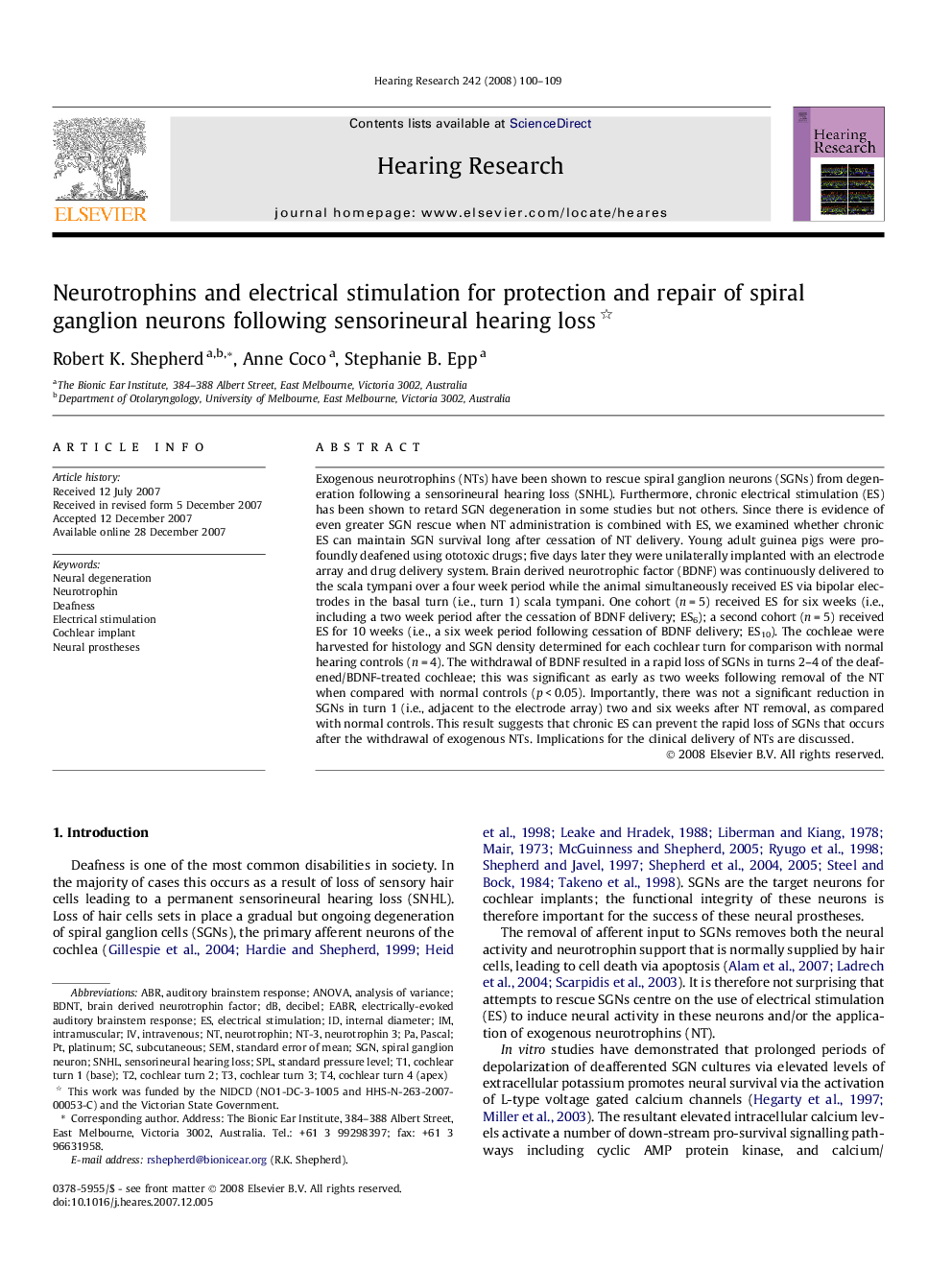| Article ID | Journal | Published Year | Pages | File Type |
|---|---|---|---|---|
| 4356058 | Hearing Research | 2008 | 10 Pages |
Abstract
Exogenous neurotrophins (NTs) have been shown to rescue spiral ganglion neurons (SGNs) from degeneration following a sensorineural hearing loss (SNHL). Furthermore, chronic electrical stimulation (ES) has been shown to retard SGN degeneration in some studies but not others. Since there is evidence of even greater SGN rescue when NT administration is combined with ES, we examined whether chronic ES can maintain SGN survival long after cessation of NT delivery. Young adult guinea pigs were profoundly deafened using ototoxic drugs; five days later they were unilaterally implanted with an electrode array and drug delivery system. Brain derived neurotrophic factor (BDNF) was continuously delivered to the scala tympani over a four week period while the animal simultaneously received ES via bipolar electrodes in the basal turn (i.e., turn 1) scala tympani. One cohort (n = 5) received ES for six weeks (i.e., including a two week period after the cessation of BDNF delivery; ES6); a second cohort (n = 5) received ES for 10 weeks (i.e., a six week period following cessation of BDNF delivery; ES10). The cochleae were harvested for histology and SGN density determined for each cochlear turn for comparison with normal hearing controls (n = 4). The withdrawal of BDNF resulted in a rapid loss of SGNs in turns 2-4 of the deafened/BDNF-treated cochleae; this was significant as early as two weeks following removal of the NT when compared with normal controls (p < 0.05). Importantly, there was not a significant reduction in SGNs in turn 1 (i.e., adjacent to the electrode array) two and six weeks after NT removal, as compared with normal controls. This result suggests that chronic ES can prevent the rapid loss of SGNs that occurs after the withdrawal of exogenous NTs. Implications for the clinical delivery of NTs are discussed.
Keywords
SGNNT-3SNHLABRSPLeABRElectrical stimulationanalysis of varianceANOVAstandard error of meanIntravenousdecibelsubcutaneousIntramuscularInternal DiameterSEMdeafnessneural degenerationNeurotrophinNeurotrophin 3spiral ganglion neuronauditory brainstem responseElectrically-evoked auditory brainstem responsePascalNeural prosthesesPlatinumCochlear implantsensorineural hearing loss
Related Topics
Life Sciences
Neuroscience
Sensory Systems
Authors
Robert K. Shepherd, Anne Coco, Stephanie B. Epp,
